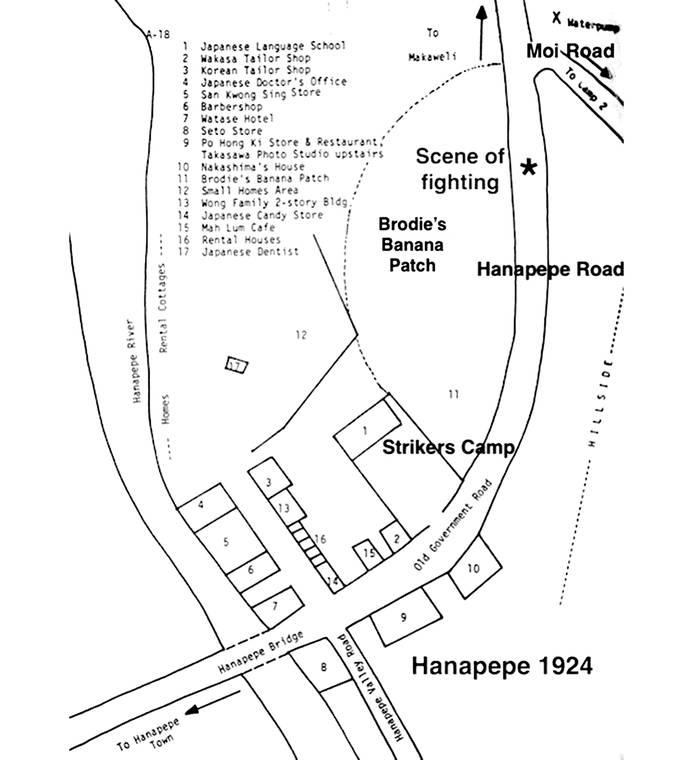A look back at ‘The Hanapepe Massacre’
Editor’s note: In light of The Garden Island’s coverage on Sunday of a documentary being shot of Kauai researchers looking for the Hanapepe gravesite of 16 striking Filipino sugar cane workers who were slain Sept. 9, 1924 in a confrontation with police and others, TGI is publishing this column by historian Hank Soboleski
In 1924, Filipino labor leader Pablo Manlapit declared a Hawaiian sugar workers strike, demanding $2 for an 8-hour work day and better housing.
This strike involved 2,000 strikers at 23 of Hawaii’s 45 plantations, with just 4 of Kauai’s 11 plantations represented: McBryde, Makaweli, Makee, and Lihue.
Its most notable incident was the infamous “Hanapepe Massacre.”
A day or two before the incident occurred, two non-striking Ilocano men from Makaweli Plantation had pedaled their bicycles into Hanapepe to do some shopping and were kidnapped by striking Visayans and held in the strikers camp at the Japanese Language School.
When their friends discovered them missing, they called police, and Deputy Sheriff Crowell and one policeman went to the camp to get the men released, but they refused to go.
Crowell, suspecting that the men had been intimidated into saying they would not leave, then got a court order to arrest them for their own protection.
The following morning, the 9th, Crowell returned to the camp with an arrest warrant, along with several hunters deputized as policemen.
Following negotiations, the strikers released both men into his custody, and Crowell, with his deputies and the two Ilocanos, then walked westward through town on Hanapepe Road toward the area where their vehicles were parked.
On their way, a crowd of strikers armed with knives, sticks, and a few pistols pressed upon them.
Exactly what was done or said to provoke the fight that ensued, and exactly who thrust the first blade or fired the first shot, is not known.
The “Hanapepe Massacre” took place just before the road that went uphill to Camp 2, and during a furious melee that lasted 5 minutes, 2 policemen climbed a hillside and fired their rifles, killing several strikers unnecessarily while they fled into Brodie’s banana patch.
The confrontation left 16 strikers killed and 9 wounded; 3 policemen were killed by gunshot, and 3, Crowell included, were wounded by knives, 1 mortally.
One hundred thirty strikers and their leaders were arrested and tried, 56 being found guilty of riot and imprisoned, with many later deported to the Philippines.
•••
Hank Soboleski has been a resident of Kauai since the 1960s. Hank’s love of the island and its history has inspired him, in conjunction with The Garden Island Newspaper, to share the island’s history weekly. The collection of these articles can be found here: https://bit.ly/2IfbxL9 and here https://bit.ly/2STw9gi Hank can be reached at hssgms@gmail.com

